- About MAA
- Membership
- MAA Publications
- Periodicals
- Blogs
- MAA Book Series
- MAA Press (an imprint of the AMS)
- MAA Notes
- MAA Reviews
- Mathematical Communication
- Information for Libraries
- Author Resources
- Advertise with MAA
- Meetings
- Competitions
- Programs
- Communities
- MAA Sections
- SIGMAA
- MAA Connect
- Students
- MAA Awards
- Awards Booklets
- Writing Awards
- Teaching Awards
- Service Awards
- Research Awards
- Lecture Awards
- Putnam Competition Individual and Team Winners
- D. E. Shaw Group AMC 8 Awards & Certificates
- Maryam Mirzakhani AMC 10 A Awards & Certificates
- Two Sigma AMC 10 B Awards & Certificates
- Jane Street AMC 12 A Awards & Certificates
- Akamai AMC 12 B Awards & Certificates
- High School Teachers
- News
You are here
Who's That Mathematician? Paul R. Halmos Collection - Page 33
For more information about Paul R. Halmos (1916-2006) and about the Paul R. Halmos Photograph Collection, please see the introduction to this article on page 1. A new page featuring six photographs will be posted at the start of each week during 2012.
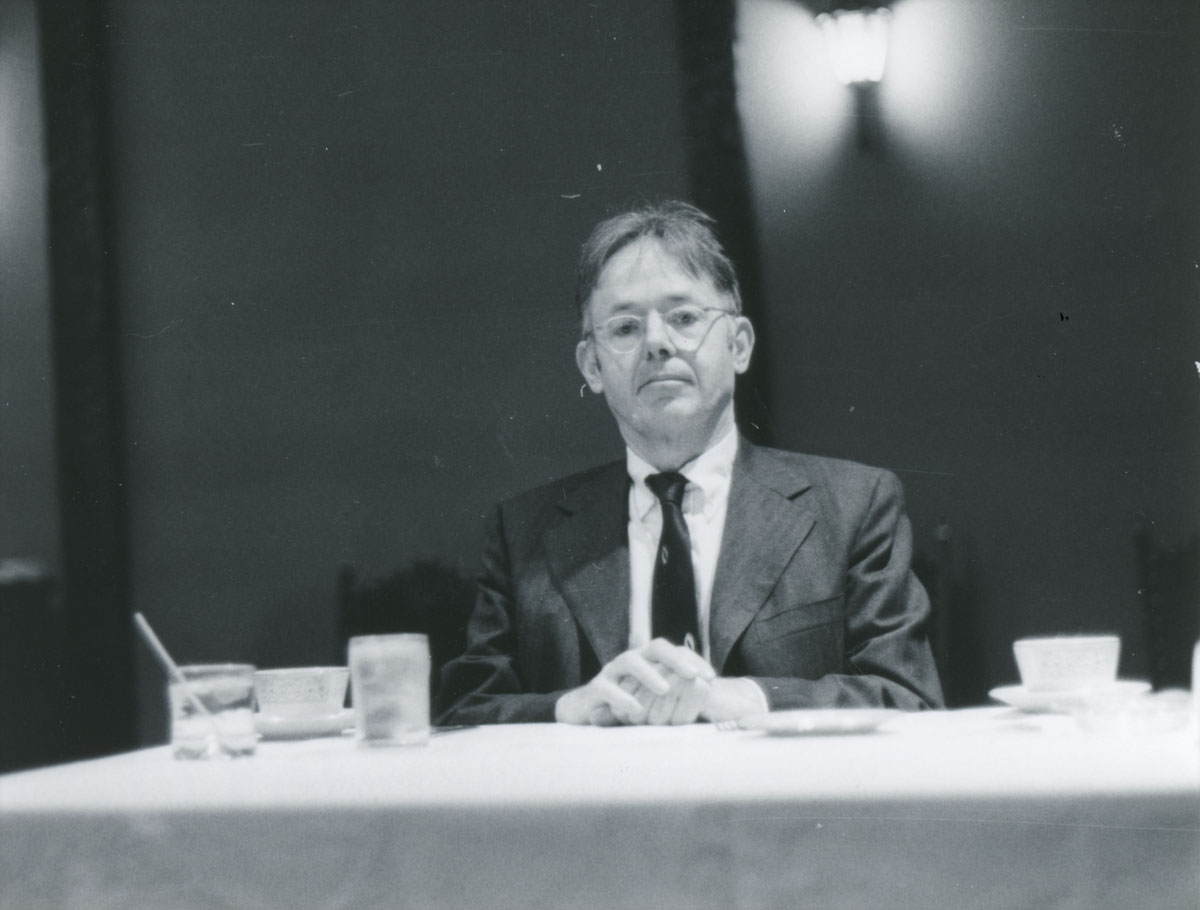
Halmos photographed group representation theorist George Mackey (1916-2006) in April of 1973 in Philadelphia, Pennsylvania. Mackey studied physics as an undergraduate at the Rice Institute (later Rice University) in Houston but switched to mathematics when he entered Harvard University as a graduate student. He earned his Ph.D. from Harvard in 1942 with the dissertation, “The Subspaces of the Conjugate of an Abstract Linear Space,” written under advisor Marshall Stone (whose photograph appears on page 4 of this collection). After one year on the faculty of the Illinois Institute of Technology in Chicago, Mackey returned to Harvard, where he spent the rest of his career, eventually becoming Landon T. Clay Professor of Mathematics. The first of his at least 23 doctoral students was Andrew Gleason (page 17 of this collection), who was appointed a Junior Fellow at Harvard in 1946, and also spent the rest of his career there. The best known of Mackey’s five books probably is his first book, The Mathematical Foundations of Quantum Mechanics (1963), now available from Dover Publications. (Sources: MacTutor Archive, Mathematics Genealogy Project)
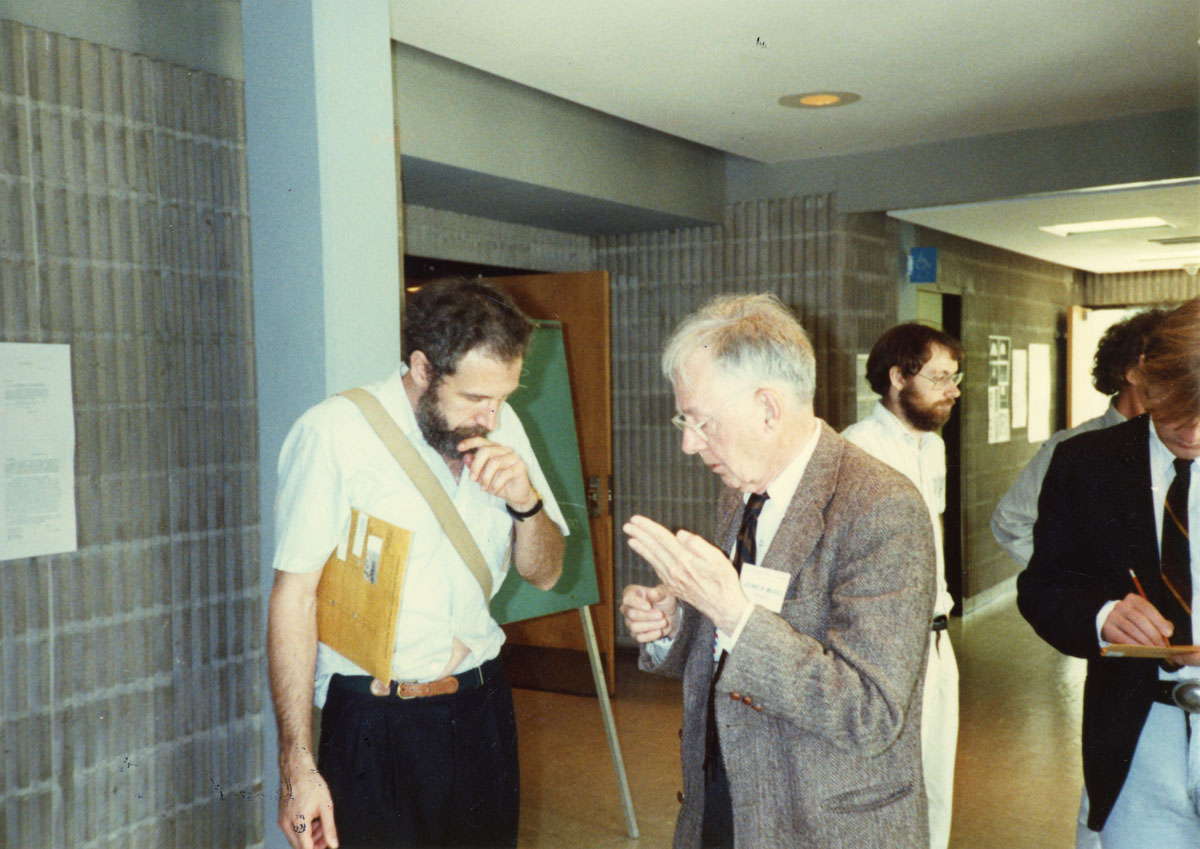
Alain Connes (left) and George Mackey (1916-2006) were photographed by Halmos in June of 1988 at Hofstra University in Hempstead, Long Island, New York. (For a photograph of Bob Bartle and Marshall Stone at the same conference, see page 4 of this collection.) For information about Mackey, see the photo caption above.
Fields Medalist Alain Connes received his Ph.D. in 1973 from the École Normale Supérieure in Paris, with a dissertation on von Neumann algebras written under Jacques Dixmier (page 12 of this collection). Connes continued to obtain important results on the classification and structure of operator algebras and was awarded the Fields Medal in 1982 primarily for this work. In May of 2000, he won the Clay Research Award “for revolutionizing the field of operator algebras, for inventing modern non-commutative geometry, and for discovering that these ideas appear everywhere, including the foundations of theoretical physics” (citation quoted in MacTutor Archive). Connes has been a professor at the Institut des Hautes Études Scientifiques since 1980 and at the Collège de France since 1984; both are in Paris. He also was director of France’s Centre National de la Recherche Scientifique from 1981 to 1989. (Sources: MacTutor Archive, International Mathematical Union Fields Medals; see also Alain Connes official website)
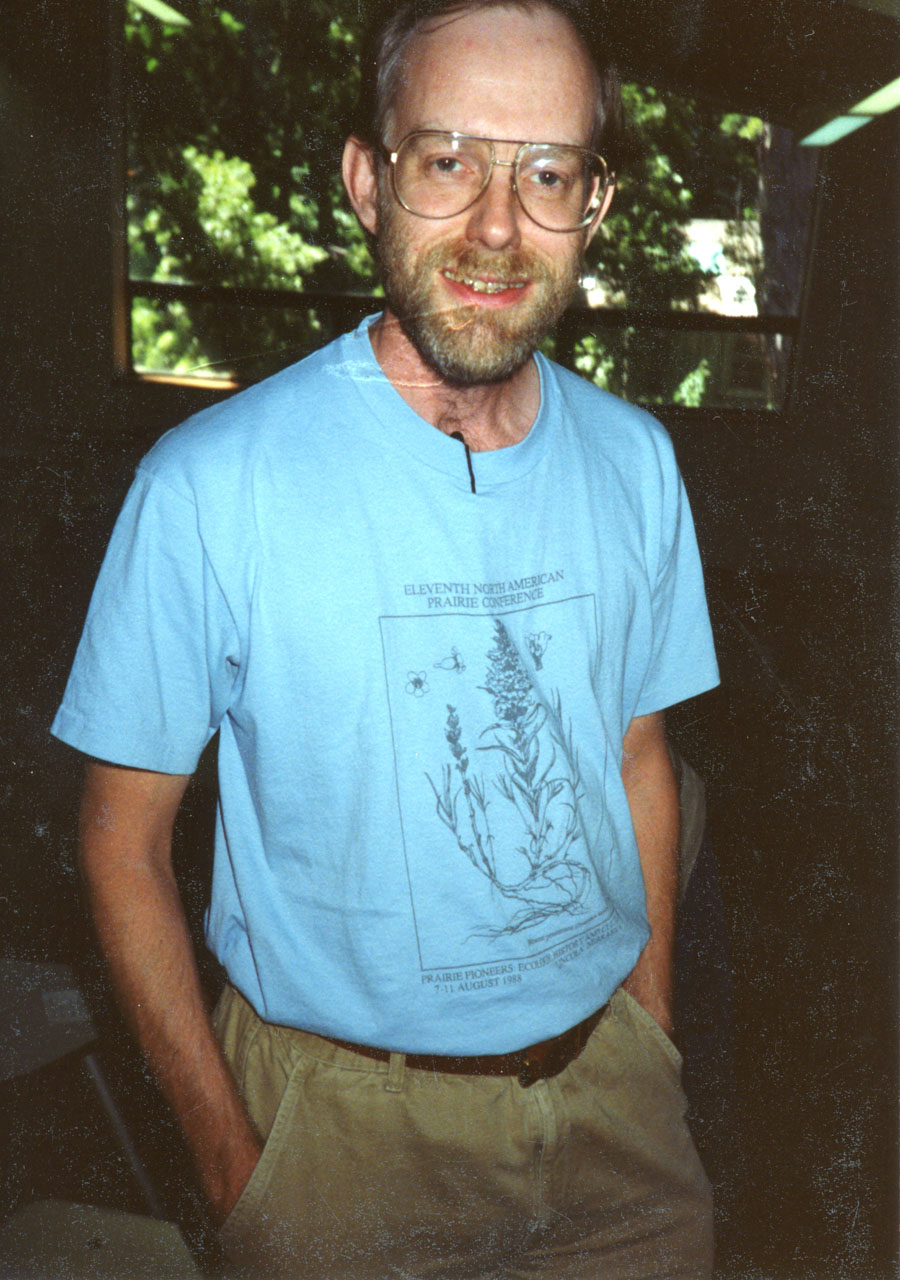
Halmos photographed algebraic logician Roger Maddux in June of 1990 in Oakland, California. Maddux earned his Ph.D. in 1978 from the University of California, Berkeley, with the dissertation, “Topics in Relation Algebras,” written under Alfred Tarski. He is Professor Emeritus of Mathematics at Iowa State University in Ames, Iowa. (Sources: Mathematics Genealogy Project, Iowa State University Mathematics)
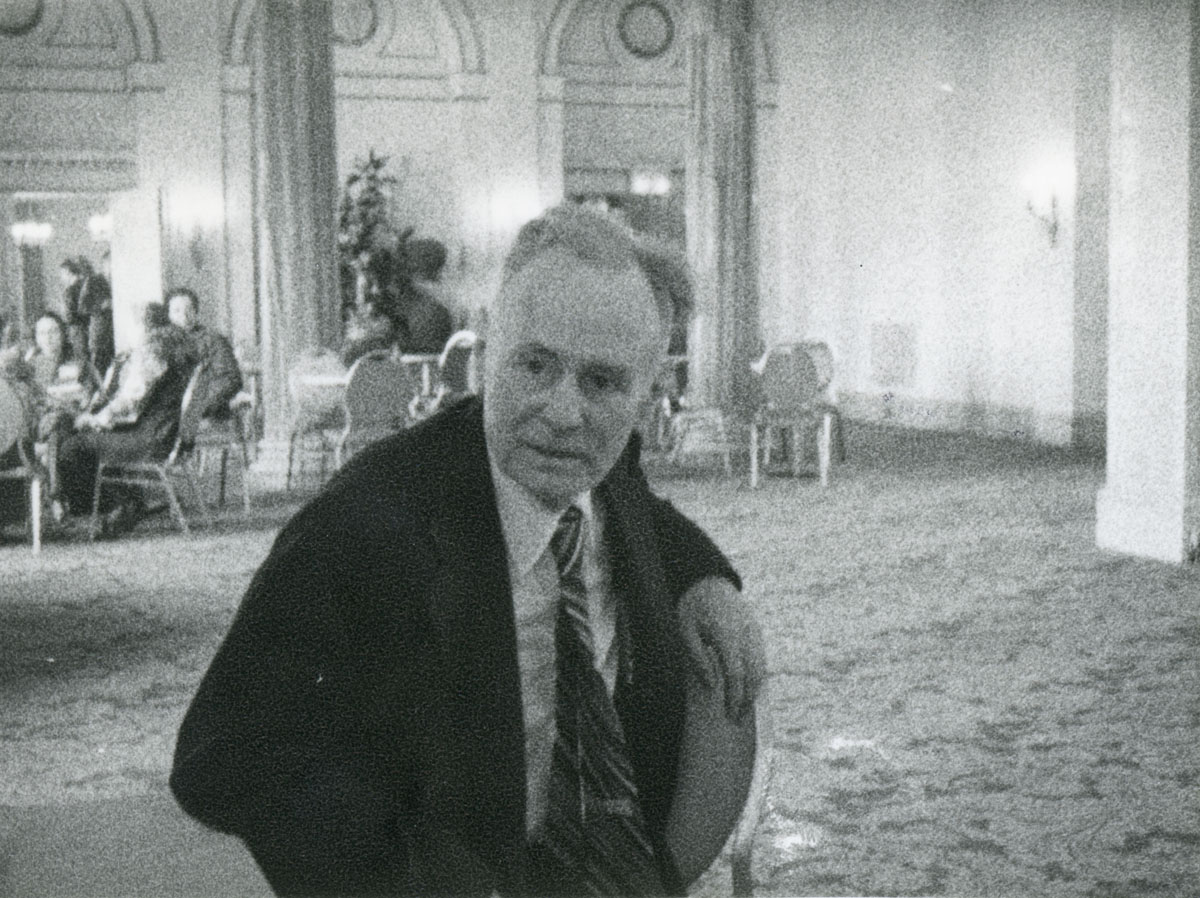
Group theorist Wilhelm Magnus (1907-1990) was photographed by Halmos in April of 1973 at a meeting of the AMS Council at the Biltmore Hotel in New York City. Magnus earned his Ph.D. in 1931 from the University of Frankfurt, Germany, under advisor Max Dehn, and was then on the faculty at Frankfurt until 1938. Barred from academic posts for refusing to join the Nazi party, he worked in industry during World War II. In 1948, he left Germany to join the Bateman Project at the California Institute of Technology (Caltech). This was a project to publish the work on special functions and integral transforms of the prolific (an average of 5 papers per year for the last 40 years of his life) applied mathematician Harry Bateman (1882-1946), who helped establish Caltech as a leading scientific research institution. In 1950, Magnus moved to the Courant Institute at New York University, where he advised all but eight of his 74 Ph.D. students and did research on special functions and mathematical physics, as well as the combinatorial group theory for which he is best known. His book, Combinatorial Group Theory, has been re-published by Dover. (Sources: MacTutor Archive, Mathematics Genealogy Project)
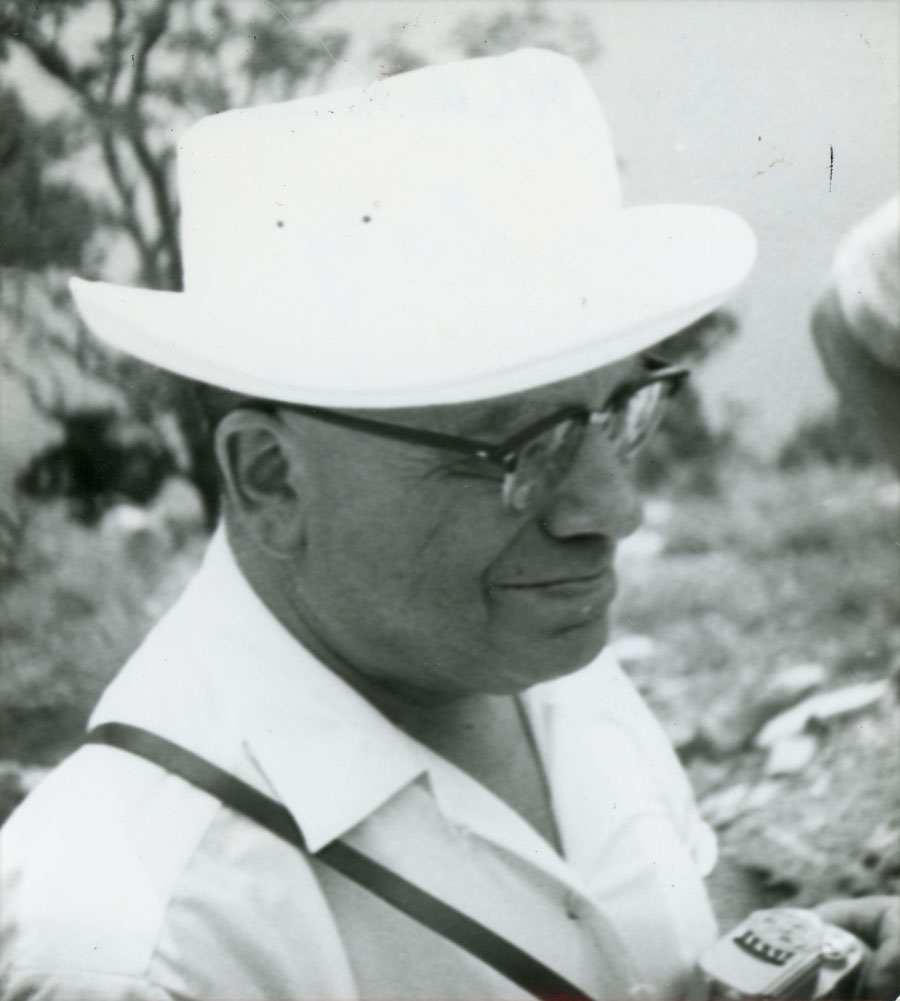
Halmos photographed number theorist Kurt Mahler (1903-1988) in January of 1964. Mahler was a self-taught mathematician, encouraged by a local high school teacher in Krefeld, Germany (with whom his father had shared his mathematical work), and by Carl Siegel at Göttingen to study for the university entrance exam. He entered the University of Frankfurt, where Siegel had moved, in 1923 and earned his Ph.D. there in 1927 with a dissertation on zeros of the incomplete gamma function directed by Siegel. Mahler actually had moved to Göttingen in 1925, where he was influenced by a number of mathematicians, most notably Emmy Noether, who taught him about p-adic numbers. He remained at Göttingen until the fateful year of 1933 when the Nazi party came to power. Mahler moved to the University of Manchester, England, that year, and he spent most of the 1930s at Manchester and at the University of Groningen in the Netherlands. In 1936, he met the nomadic number theorist Paul Erdös (see pages 3, 14, and 27 of this collection) and the two began a lifelong collaboration and friendship. In 1941 Mahler became a permanent faculty member at Manchester, where he remained until 1962, when he moved to the University of Canberra, Australia. Except for spending 1968 to 1972 at Ohio State University in the U.S., he spent the rest of his career and life in Canberra. (Source: MacTutor Archive)
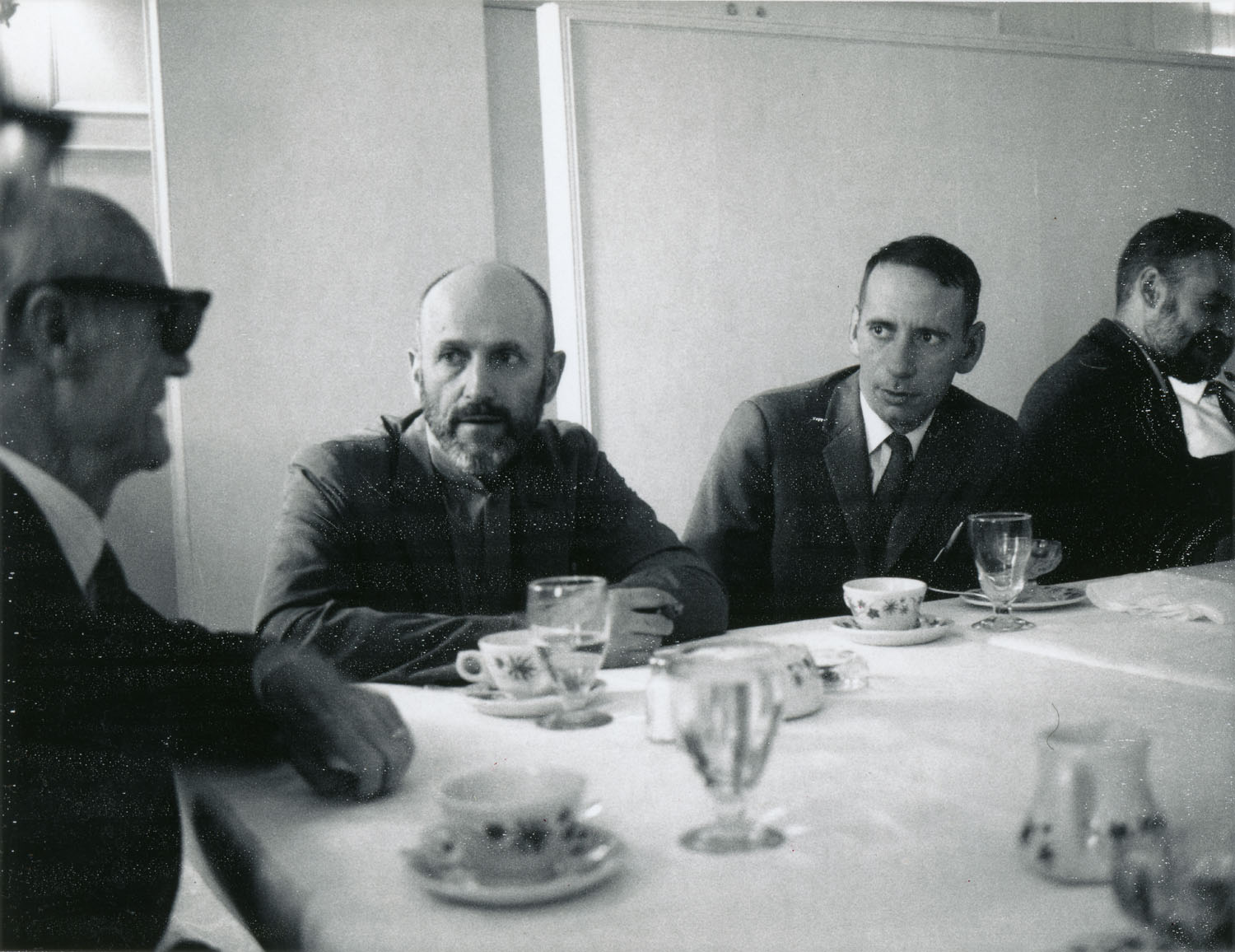
Halmos photographed, left to right, H.S.M. “Donald” Coxeter (1907-2003), Kenneth O. May (1915-1977), William T. Sharp (1927-1972), and James “Ray” Vanstone (1933-2001) on September 19, 1969 in Toronto, Ontario, Canada. All four were mathematics professors at the University of Toronto at the time. Two more photographs of Coxeter appear on page 10 of this collection and you can read more about him there.
Kenneth O. May earned his Ph.D. in 1946 from the University of California, Berkeley, and spent most of his career at the University of Toronto, where he specialized in the history of mathematics. He was founding chair of the International Commission for the History of Mathematics (ICHM) and founding editor of its journal, Historia Mathematica, in 1971 and 1973, respectively. ICHM, in cooperation with the Institute for History of Science and Technology at the University of Toronto, honors May with its Kenneth O. May Prize and Medal, awarded every four years to scholars who have made “significant lifetime contributions to the history of mathematics.” Ken May also helped found the Canadian Society for the History and Philosophy of Mathematics (CSHPM), which honors him with its annual Kenneth O. May Lecture. (Sources: Mathematics Genealogy Project; ICHM; CSHPM; “Mathematics People: Bos Awarded 2005 May Prize,” AMS Notices 52:11 (Dec. 2005), p. 1363)
Born in London, England, mathematical physicist William T. Sharp earned his Ph.D. in 1960 from Princeton University with the dissertation "Racah Algebra and the Contraction of Groups," written under Eugene Paul Wigner. He had earned bachelors (1947) and masters (1948) degrees at the University of Toronto and, in 1962, after a short stint at the University of Alberta, he returned to Toronto as a mathematics professor. An avid mountain climber and longtime member of the Alpine Club of Canada, Bill Sharp died in a climbing accident in British Columbia at the age of 45. His colleague, Edward Barbeau, now Professor Emeritus of Mathematics at the University of Toronto, remembers him as
... the sort of colleague that every department would rejoice to have, affable, fair-minded and very conscientious about canvassing the opinions of his colleagues before decisions were taken. Even after 40 years, I remember him fondly.
We are grateful to Ed Barbeau for identifying Sharp and for researching him in the University of Toronto Archives. (Mathematics Genealogy Project, University of Toronto Archives)
Born in Ontario, Canada, James Ray Vanstone earned his Ph.D. in 1959 from the University of Natal in South Africa with a dissertation titled “Generalized Metric Differential Geometry.” He had earned bachelors and masters degrees at the University of Toronto, and he returned to Canada to join the faculty there in 1959, becoming Professor Emeritus in 1995. Ray Vanstone wrote papers on multilinear algebra and on differential geometry, especially as it relates to relativity, but he may be best known as co-author with his Toronto colleagues Werner Greub and Stephen Halperin of the three-volume set, Connections, Curvature, and Cohomology. He was active in the Canadian Mathematical Society (CMS) throughout his career. (Sources: Mathematics Genealogy Project; “Obituaries” CMS Notes 33:5 (Sept. 2001) pp. 18-19; CMS Service)
For an introduction to this article and to the Paul R. Halmos Photograph Collection, please see page 1. Watch for a new page featuring six new photographs each week during 2012.
Regarding sources for this page: Information for which a source is not given either appeared on the reverse side of the photograph or was obtained from various sources during 2011-12 by archivist Carol Mead of the Archives of American Mathematics, Dolph Briscoe Center for American History, University of Texas, Austin.
Janet Beery (University of Redlands) and Carol Mead (Archives of American Mathematics, University of Texas, Austin), "Who's That Mathematician? Paul R. Halmos Collection - Page 33," Convergence (January 2012), DOI:10.4169/loci003801




